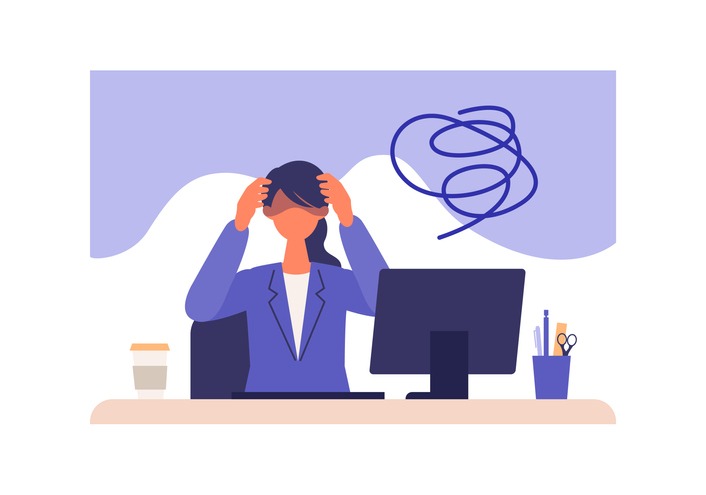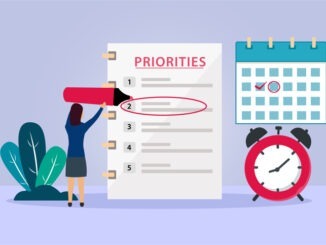
ADHD employees are getting left behind in the remote work debate – here’s how you can address their needs through a few effective strategies.
CREDIT: This is an edited version of an article that originally appeared on Entrepreneur
Picture the daily work life of an individual with ADHD as a boxing match. Every punch, every dodge, every round won or lost is a new challenge or victory. Now, introduce remote work into this picture.
It’s like giving the adversary an extra glove. A study by Skynova shows that remote workers with ADHD find their daily tasks 17% more challenging than their on-site peers. The challenge is no longer a straightforward match; it’s morphed into a tag-team wrestling bout with hidden opponents and unforeseen tactics.
But the plot thickens further. Remote workers with ADHD are 54% more likely to struggle with impulse control than their on-site colleagues. The lure of distractions for these individuals is akin to a child let loose in a candy store, with all the goodies in the world at their fingertips.
So, what’s the secret ingredient to brewing a workplace that’s ADHD-friendly? The answer is simple— flexible schedules.
Picture a night owl, not confined by the traditional 9 to 5, but free to spread its wings when it’s most alert and productive. This is the allure of flexible schedules, which 64% of employees with ADHD have chosen as their top benefit for how workplaces can help those with ADHD.
Thus, ironically, remote work both correlates with more challenges in daily tasks for those with ADHD and serves as a solution, by providing greater flexibility. Given that nearly two-thirds of those with ADHD choose flexibility as their most important benefit for addressing ADHD in the workplace, it seems the benefits of remote work outweigh the costs.
Those with ADHD, fatigue, brain fog and a set of other conditions express a stronger preference for more flexibility, in schedule and place of work than those who don’t suffer from such conditions.
The silver lining: Career growth and ADHD
ADHD might seem like an impediment, but Skynova’s survey highlights that it’s not a career killer. Progress is slow, but it’s progress nonetheless.
Many hybrid (74%) and on-site (68%) workers admit that they have grown in their careers despite their ADHD. Meanwhile, 61% of their remote counterparts echo this sentiment, albeit at a slightly lesser frequency.
The numbers portray a powerful story. A whopping 58% of employees with ADHD express satisfaction with their career choices. They are the content diners at a restaurant, satiated and pleased with the meal of career options served to them.
The balancing act: Nurturing a supportive environment for workers with ADHD
It’s now time to shine a spotlight on the corporate maestros — the organisations. Here, the picture is a mixed bag of popcorn, with flavours ranging from savoury to unsavoury. On the bright side, four in 10 workers with ADHD play a harmonious tune, stating that their company or manager strikes the right chord in providing a supportive environment.
Remarkably, two-thirds of these corporate tightrope walkers believe they have grown in their careers despite the juggling act. It’s a testament to their resilience and determination. However, 39% express that their ADHD has sometimes acted like an overly cautious GPS, restricting their journey by suggesting safer, albeit longer and less rewarding routes.
In some cases, ADHD is more than just a hurdle – it feels like a looming mountain. Over a quarter of workers with ADHD have tasted the bitter pill of layoffs, with 21% suspecting that their ADHD was a contributing factor. It’s akin to being penalised for a snowstorm when all you did was forget your snow boots.
Cognitive biases: The invisible puppeteers of the ADHD narrative
Just as a marionette is controlled by the invisible strings of its puppeteer, our perceptions and decisions about ADHD and remote work can often be manipulated by cognitive biases. These cognitive biases can distort our understanding and influence our decisions, like an autocorrect feature that sometimes corrects us in the wrong way.
In the context of ADHD and remote work, confirmation bias might lead us to focus exclusively on the challenges faced by individuals with ADHD. We might be more inclined to view ADHD as a barrier, only taking note of the 17% increase in daily challenges for remote workers with ADHD.
We might overlook the part of the Skynova study that tells us that a significant percentage of workers with ADHD (65%) have managed to grow in their careers despite their challenges. Or that 64% prefer flexibility as the top way that companies can help address challenges for people with ADHD.
In the workplace, managers and colleagues might also succumb to confirmation bias, interpreting the actions of employees with ADHD through a lens of preconceived notions. For example, an employee with ADHD who forgets a deadline might be viewed as “irresponsible,” reinforcing negative stereotypes about ADHD. In doing so, we overlook the unique strengths and potential that these individuals bring to the table.
In the world of remote work, the empathy gap can lead to a lack of understanding and support for colleagues with ADHD. For instance, people without ADHD might struggle to grasp why a remote environment presents extra challenges for their ADHD colleagues.
They might not understand the heightened struggle with impulse control that their remote colleagues with ADHD experience. As a result, they might unintentionally make decisions or judgments that further exacerbate these challenges.
Indeed, the second most-named benefit after flexible schedules helpful for addressing problems for those with ADHD was employers encouraging breaks when needed, named by 44% of survey respondents.
To counteract these cognitive biases, it is crucial to foster an environment of open conversation and education about ADHD. Understanding these biases, like holding up a mirror to our thoughts, is the first step towards ensuring that our decisions and actions become more inclusive and supportive of all workers, whether they are navigating the corporate labyrinth from an office cubicle or a home desk.


Be the first to comment